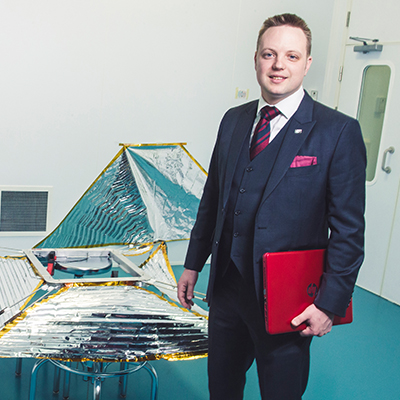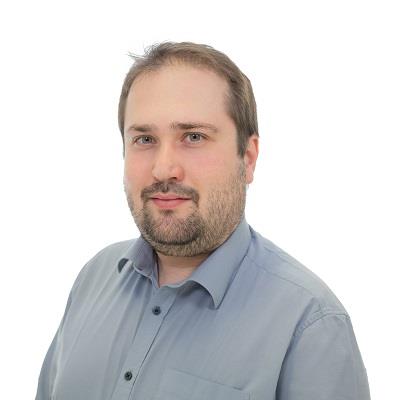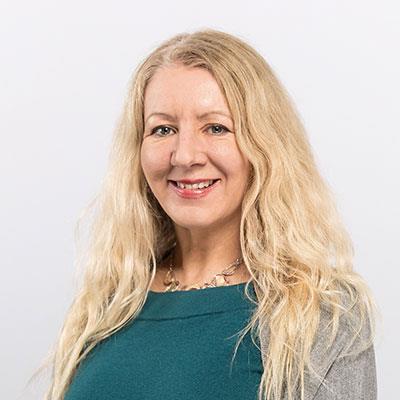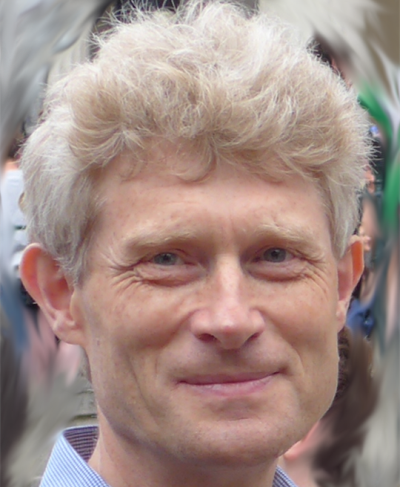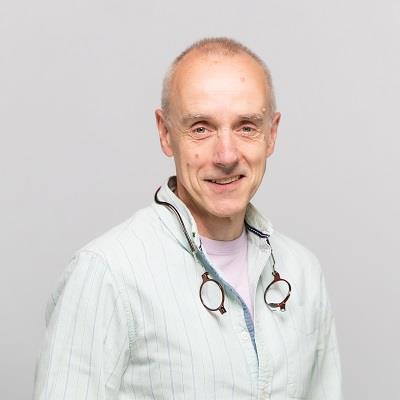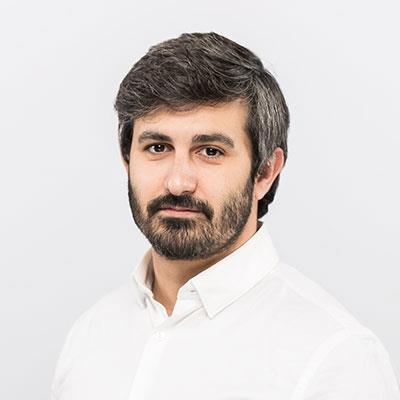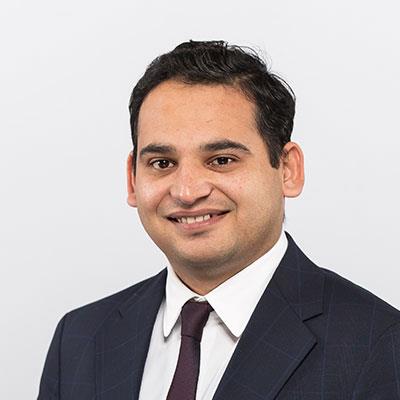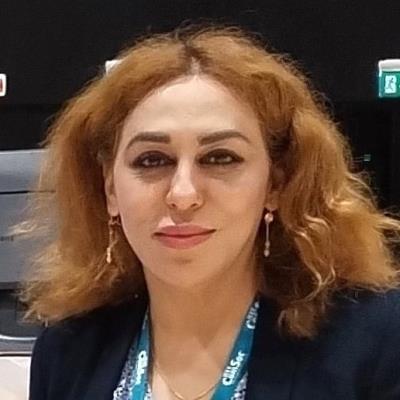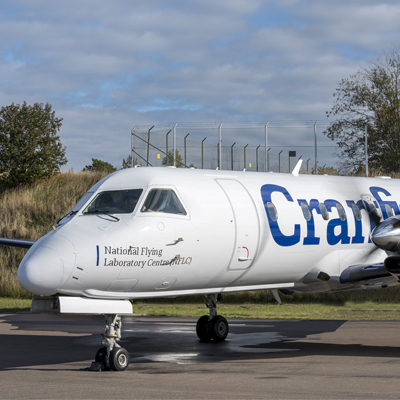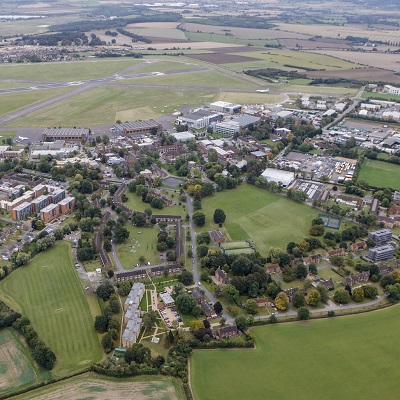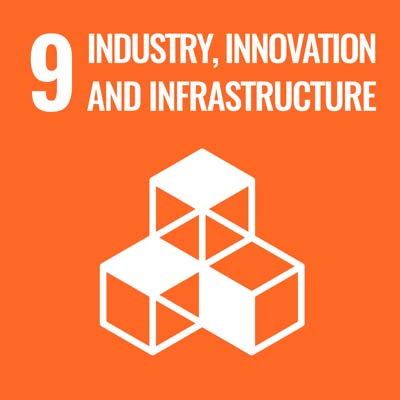Space still remains largely unexplored and there is always the possibility of making new discoveries. The field of astronautics and space engineering have driven the development of many new technologies, such as GPS, satellite communications, and weather forecasting. Although the space sector contributes significantly to the economy, it still represents a vast market with untapped potential for development and commercialisation.
There is a continuing need for talented employees with a good understanding of spacecraft systems engineering, coupled with a broad range of technical skills. Evolving constantly since 1987, the MSc in Astronautics and Space Engineering has consistently prepared graduates for highly successful careers in the space sector, from earth observation to planetary exploration, launch vehicles to spacecraft operations, and much more.Overview
- Start dateOctober
- DurationOne year full-time, normally three years part-time (by extended thesis)
- DeliveryTaught modules 30%, group project 30%, individual research project 40%
- QualificationMSc
- Study typeFull-time / Part-time
- CampusCranfield campus
Who is it for?
The MSc is suitable for students with a first or second class UK honours degree or equivalent, in mathematics, physics or an engineering discipline. Students from other sciences, mathematics, or computing backgrounds are welcome to apply. We also offer a part time route for students looking to remain in employment while studying.
Why this course?
This master's degree is highly respected around the world, and many of our students obtain employment/research offers in the space sector before the course finishes. You will gain unique exposure to potential employers through interaction with our industry partners at events such as the group design project industry presentation, guest lectures and dedicated interview days, dedicated interview days and alumni conferences. In many space companies and agencies within Europe you will find our former graduates, some in very senior positions. We are also delighted to have our first astronaut graduate, Katherine Bennell-Pegg, who is currently in training with ESA. Many of our graduates continue to contribute to the course forming a valuable network of contacts for those entering the industry and this course will equip you with the skills required to join them in a successful career in industry or research.
During the Astronautics and Space Engineering MSc, you will have the opportunity to take part on a Student Experience Flight in our National Flying Laboratory Centre’s (NFLC) light aircraft. This flight experience will complement your MSc studies, focussing on the effects of control, spatial disorientation and the effects of “G” forces. During the flight you will have the opportunity to take control of the aircraft. Each experience is 2 to 3 hours in duration and includes a pre-flight safety briefing outlining the details of the manoeuvres to be flown, a flight of approximately 1 hour, and a post-flight debrief.
In addition to the academic activities, many of our students participate in a range of exciting space-related extracurricular activities with CranSEDS, our local branch of UK Students for the Exploration and Development of Space (UKSEDS). This society participates in events such as rocket and rocket engine build and testing, satellite design and Lunar/Mars rover competitions, and has an impressive track record of success in these endeavours.
Informed by industry
The course is directed by an Industrial Advisory Panel which includes representatives from a range of organisations from the sector. This panel ensures that the course content equips you with the skills and knowledge required by leading employers.
Industrial Advisory Panel organisations include:
- Airbus DS
- Open Cosmos
- Telespazio
- Oxford Space Systems
- UK Launch Services Ltd
- Eumetsat
Course details
The taught programme for the Astronautics and Space Engineering master's is generally delivered from October to September. A range of core modules allows you to gain a firm grounding in space engineering before opting for specialist modules to build your knowledge in a certain area.
Course delivery
Taught modules 30%, group project 30%, individual research project 40%
Group project
This is a space mission design study conducted in teams of 10-15 students. It typically takes place from September to April and is assessed by written reports and presentations. It emphasises space systems engineering methodologies, and is designed to prepare our graduates for the project-based working environment often found in space companies and agencies. The topics chosen for the project are strongly influenced by industry.
Recent group projects have included:
- Asteroid Sample Return,
- Titan Exploration Mission,
- European Data Relay Satellite System.
Our part-time students are encouraged to participate in a group project as it provides a wealth of learning opportunities. However, an option of an individual dissertation is available if agreed with the Course Director.
Watch a past presentation video to give you a taster of our innovative and exciting group projects (YouTube):
Individual project
The individual research project is the largest single component of the course typically taking place between April and August. It allows you to develop specialist skills in an area of your choice by taking the theory from the taught modules and joining it with practical experience. A list of suggested topics is provided, and includes projects proposed by academic staff and industry.
Recent individual research projects have included:
- Thermal Analysis of a Google Lunar X-Prize Rover,
- CubeSat Ground Station Implementation,
- Responsive Space and Concurrent Engineering,
- Space Suit Performance During Seat Ingress/Egress,
- Radar Data Simulation for Soil Moisture Estimation.
Part-time students are encouraged to participate in a group project as it provides a wealth of learning opportunities. However, an option of an individual dissertation is available if agreed with the Course Director.
Modules
Keeping our courses up-to-date and current requires constant innovation and change. The modules we offer reflect the needs of business and industry and the research interests of our staff and, as a result, may change or be withdrawn due to research developments, legislation changes or for a variety of other reasons. Changes may also be designed to improve the student learning experience or to respond to feedback from students, external examiners, accreditation bodies and industrial advisory panels.
To give you a taster, we have listed the compulsory and elective (where applicable) modules which are currently affiliated with this course. All modules are indicative only, and may be subject to change for your year of entry.
Course modules
Compulsory modules
All the modules in the following list need to be taken as part of this course.
Research Skills
| Aim |
Please note this is an attendance only module and there is no examination
Professional engineers and scientists require general skills for research, which are (1) to plan and manage research projects effectively, (2) to be able to write reports that are useful, and (3) to give good spoken presentations of their work. |
|---|---|
| Syllabus |
Reporting research: Written presentations, especially a technical report / thesis; structure of a report; aspects of good writing style. Requirements for written work submitted for assessment. Presenting research: Spoken presentations; factors enabling clear communication; typical presentation structure. |
| Intended learning outcomes |
|
Space Systems Engineering
| Aim |
To demonstrate how to develop the design of a space system, from the initial mission objective, through requirements definition, concept development and trade-off, and through to a baseline design. |
|---|---|
| Syllabus |
• Brief history & context: Background to the development of space, agencies, funding, future missions. • Introduction to space system design methodology: requirements, trade-off analysis, design specifications, system budgets. • Spacecraft sub-systems design: Structure & configuration; Power, the power budget and solar array and battery sizing; Communications and the link budget; Attitude determination and control; Orbit determination and control; Thermal control. • Mission and payload types Spacecraft configuration: examples of configuration of spacecraft designed for various mission types; case study. • Introduction to cost engineering. • Space and Spacecraft Environment: Radiation, vacuum, debris, spacecraft charging, material behaviour and outgassing. • Assembly, Integration and Test processes; Launch campaign; Space mission operations. |
| Intended learning outcomes |
On successful completion of this module you should be able to: 1. Establish quantitative mission requirements. 2. Characterise the mission design drivers and identify solution options at system and subsystem level. 3. Evaluate the performance of options by means of a trade-off analysis. 4. Produce a baseline system definition, with appropriate engineering budgets. 5. Outline a programme plan to verify the system performance. |
Space Propulsion
| Aim |
|
|---|---|
| Syllabus |
Introduction: The interactions between propulsion system, mission & spacecraft design. Spacecraft Performance: Mission requirements, Vehicle dynamics, Tsiolkovski rocket equation, Launch vehicle sizing and multi-staging. Illustrative launcher performance (Ariane, Shuttle programmes, Falcon...). Launch site/range safety constraints, Geostationary orbit acquisition. Launch Vehicles: Current Options: Vehicle design summaries, Orbital transfer vehicles, Comparative launch costs, and Reusable launchers. Propulsion Fundamentals: Systems classification, Nozzle flows, Off-design considerations (under/over-expanded flows), Thermochemistry. Space Propulsion Systems and Performance: Propellants and combustion, Solid and liquid propellant systems, Engine cycles: Spacecraft propulsion—orbit raising, station-keeping and attitude control, Propellant management at low-g—alternative storage and delivery systems: Electric propulsion, Separately Powered rocket performance, Low thrust manoeuvres, Thruster concepts and configurations. Alternative propulsion concepts and future developments: Overview of potential alternatives to current (or common) propulsion systems and their advantages, problems, or feasibility. This includes Sails, Nuclear propulsion, Air-Breathing, Space Elevators. |
| Intended learning outcomes |
On successful completion of this module you should be able to: 1. Evaluate the constraints imposed by launch vehicle performance & operation on mission analysis. 2. Assess the impact of molecular mass, toxicity, and storability of the propellant on thruster performance and cost. 3. Design system points, off-design calculations, and mission analysis using fundamental physics relationships. 4. Critically assess the relative strengths of the principal options for propulsion systems in relation to both boosters and secondary spacecraft propulsion for a range of mission applications. 5. Estimate thruster performance using fundamental methods while appraising the limitations of the techniques. |
Astrodynamics and Mission Analysis
| Aim |
To provide a critical understanding of the basic principles of Astrodynamics and Mission Analysis and of their application to typical mission analysis problems. |
|---|---|
| Syllabus |
Astrodynamics - Keplerian orbital motion Astrodynamics - Orbit Perturbations. Mission analysis |
| Intended learning outcomes |
On completion of this module you should be able to: 1. Apply appropriate techniques to solve a range of practical astrodynamics and mission analysis problems. 2. Describe widely used orbit types and their applications, and evaluate the perturbations on these orbits. 3. Plan impulsive orbital manoeuvres to achieve mission design requirements. |
System Design and Management
| Aim |
Please note this is an attendance only module and there is no examination
To demonstrate how to develop the design of a space system, from the initial mission objective, through requirements definition, concept development and trade-off, and through to a baseline design. |
|---|---|
| Syllabus |
• Systems Engineering Principles and Standards. • Product Lifecycle Management. • Stakeholder Analysis and Requirements Definition. • Architecting Complex Systems. • System Modelling and Analysis. • Tradespace Exploration and Decision Making in Engineering Systems Design. • Human and Programmatic Factors in Systems Design. |
| Intended learning outcomes |
On successful completion of this module you should be able to: 1. Describe and implement established systems engineering standards and methodologies, as well as newly emerging approaches. 2. Structure and manage the lifecycle of complex engineering systems. 3. Apply systems engineering methods and tools to design and develop complex systems. 4. Formulate and analyse complex system architectures using quantitative tools. 5. Incorporate human and programmatic factors, including endogenous and exogenous influences, in the design and management of complex engineering systems. |
Elective Modules
Positioning, Navigation and Timing Systems
| Aim |
|
|---|---|
| Syllabus |
• Overview of navigation principles and applications.
• Measurement principles and introduction to metrology. • Inertial Navigation Systems: sensors, performance and integration. • Space-based PNT sources: GNSS, LEO, star/sun trackers, opportunistic sources. • Other sources: legacy, visual, magnetic, terrestrial opportunistic. • Time information sources. • Processing techniques and technologies: Pre-processing Acquisition, tracking and discrimination Sensor fusion Machine learning and AI. • Integrity, trust and cybersecurity for PNT. |
| Intended learning outcomes |
On successful completion of this module you should be able to: 1. Categorise sources of position and timing information according to main performance characteristics and suitability to practical scenarios. |
Finite Element Methods
| Aim |
|
|---|---|
| Syllabus |
• Background to Finite Element Methods (FEM) and its application. • Introduction to FE modelling: Idealisation, Discretisation, Meshing and Post Processing. • Tracking and controlling errors in a finite element analysis. ‘Do’s and don’ts’ of modelling. • Illustration of basics of FEM using the Direct Stiffness method to define both terminology and theoretical approach. • Problems of large systems of equations for FE, and solution methods. • FE method for continua illustrated with membrane and shell elements. • Nonlinear analysis in FEM and examples. • A series of NASTRAN application sessions targeted at knowledge based practical approach to implementing FEM models |
| Intended learning outcomes |
On successful completion of this module you should be able to: 1. Distinguish, analyse, and evaluate the underlying principles and key aspects of practical application of FEA to structural problems. 2. Distinguish, analyse, and evaluate the main mathematical and numerical aspects of the element formulations for 1D, 2D and 3D elements. 3. Build and analyse finite element models based on structural and continuum elements with proper understanding of limitations of the FEM. 4. Interpret results of the analyses and assess error levels. 5. Critically evaluate the constraints and implications imposed by the finite element method |
Guidance Navigation and Control of Space Systems
| Aim |
To provide fundamental knowledge on control and estimation theories and their application in guidance navigation and control schemes in space systems. |
|---|---|
| Syllabus |
Control and Estimation Theory:
• State Space Representation of Dynamic Systems. • Stability and Controllability of Linear and Non-Linear Systems. • Design of Feedback Control Laws (PID, LQR). • Observability and Estimation of Dynamic Systems. • Kalman Filters (Linear, Extended). • Definition and Solution of Optimisation Problems. • Space-Based Applications. • GNC applications for Spacecraft Rendezvous and/or Planetary Rovers. • Optimal Manoeuvres in Space |
| Intended learning outcomes |
On successful completion of this module you should be able to: 1. Model and characterise the dynamics of space systems operations in their orbital operations. 2. Analyse the stability, controllability and observability of dynamic systems, with a particular focus on space applications. |
Mathematics and Programming for Astrodynamics and Trajectory Design
| Aim |
|
|---|---|
| Syllabus |
1. Refresher of Matlab Programming: 2. Lambert Arc: 3. Pork-chop plots: 4. Low thrust trajectory design: 5. Circular Restricted Three Body Problem: 6. Libration Point Orbits: |
| Intended learning outcomes |
On successful completion of this module you should be able to: |
Satellite Communications
| Aim |
|
|---|---|
| Syllabus |
|
| Intended learning outcomes |
On successful completion of this module you should be able to: 1. Distinguish the fundamental principles of satellite communications. 2. Assess different types of modulation and multiplexing techniques. 3. Analysis link budget & communications system design and air mobility. 4. Estimate different antenna types, characteristics and applications. 5. Evaluate channel capacity and coding techniques. |
Spacecraft Attitude Dynamics and Control
| Aim |
To provide an introduction to spacecraft kinematics and dynamics, focussing on rigid body dynamics and control of Earth orbiting satellites. |
|---|---|
| Syllabus |
• How does spacecraft dynamics relate to satellite control problem? • AOCS (Attitude & Orbit Control Sub-system) design process. • Interactions with other sub-systems. • Control loop representation. Kinematics: • Attitude representation: Euler angles, Euler parameters (quaternions). • Common reference frames (inertial, orbit referenced). • Transformation between reference frames. • Small angle linearisation (reduction of 3dof control problem to 1dof). Rigid body dynamics: • Euler's equations for rigid bodies. • Axisymetric spacecraft & free-body dynamics. • Disturbance torques. Application to spacecraft control: • Simulating spacecraft free-body kinematics & dynamics in MATLAB. • Sensor basics (sun sensors, star trackers, rate sensors). • Actuator basics (thrusters, reaction wheels). • Rate control of rigid body spacecraft. • Attitude control of 3-axis stabilised spacecraft. |
| Intended learning outcomes |
On successful completion of this module you should be able to:
1. Be able to demonstrate a critical understanding of the dynamics and kinematics of rotational motion of spacecraft. 2. Be able to apply appropriate techniques to solve a range of practical spacecraft dynamics and control problems. |
System Design and Management
| Aim |
Please note this is an attendance only module and there is no examination
To demonstrate how to develop the design of a space system, from the initial mission objective, through requirements definition, concept development and trade-off, and through to a baseline design. |
|---|---|
| Syllabus |
• Systems Engineering Principles and Standards. • Product Lifecycle Management. • Stakeholder Analysis and Requirements Definition. • Architecting Complex Systems. • System Modelling and Analysis. • Tradespace Exploration and Decision Making in Engineering Systems Design. • Human and Programmatic Factors in Systems Design. |
| Intended learning outcomes |
On successful completion of this module you should be able to: 1. Describe and implement established systems engineering standards and methodologies, as well as newly emerging approaches. 2. Structure and manage the lifecycle of complex engineering systems. 3. Apply systems engineering methods and tools to design and develop complex systems. 4. Formulate and analyse complex system architectures using quantitative tools. 5. Incorporate human and programmatic factors, including endogenous and exogenous influences, in the design and management of complex engineering systems. |
Payload System Design: Imagers and Earth Observation
| Aim |
|
|---|---|
| Syllabus |
• The payload as part of a system; the flow-down of requirements. • Payload principles, especially for imaging payloads. • Quantifying payload performance (e.g. resolution, signal-to-noise ratio) from payload system parameters (size, power, data-rates, etc.). • Imaging payload case studies. • Earth system introduction (components – atmosphere, oceans, land, cryosphere – and their interactions) – as a prime justification for future Earth Observation (EO) missions. • EO measurement techniques (relating signal to target properties). • Quantifying user requirements and relating these to imager requirements. • Climate change science and derived observation requirements. |
| Intended learning outcomes |
On successful completion of this module you should be able to: 1. Relate user requirements to payload requirements. 2. Develop the system design for an imaging payload. 3. Quantify payload performance, e.g. resolution and SNR. 4. Relate Earth system science, especially climate science and its related observation requirements, to space mission design. |
Space Robotics
| Aim |
|
|---|---|
| Syllabus |
Space environment Planetary Robotics
|
| Intended learning outcomes |
|
On-Board Data Handling and TT&C
| Aim |
|
|---|---|
| Syllabus |
|
| Intended learning outcomes |
|
Space Electric Propulsion
| Aim |
The aims of this course are to:
|
|---|---|
| Syllabus |
|
| Intended learning outcomes |
|
Introduction to Computer Aided Design (CAD)
| Aim |
To give students an understanding of Computer Aided Design and to give students ‘hands on’ experience using CATIA v5 a leading CAD/CAM/CAE system. |
|---|---|
| Syllabus |
CAD modelling techniques : Overview of CAD modelling techniques and their strengths and weaknesses. Detailed introduction to solid and assembly modelling and parametric design principles. Introduction to CATIA (4 workshop sessions) CATIA Training : Introduction to the CATIA user interface and essential concepts Hands-on workshop sessions : Practical sessions introducing CATIA solid and assembly modelling Case Study: Satellite design exercise to apply the learned skills. |
| Intended learning outcomes |
On successful completion of this module a student should be able to: 1. Describe what computer aided design is and its role in the aerospace design process. 2. Select the most appropriate CAD modelling technique for an engineering application Use the CATIA software to create simple solid models for space engineering applications. 3. Use the CATIA software to create simple assembly models for space engineering applications. |
Space Environment
| Module Leader |
|
|---|---|
| Aim |
To describe the near-Earth space environment, with particular reference to its impact on spacecraft design and space systems. |
| Syllabus |
|
| Intended learning outcomes |
On successful completion of this module a student should be able to: 1. Understand the key physical parameters of the near-earth space environment. 2. Appreciate the ways in which the space environment affects spacecraft design and space systems. |
Structural Mechanics
| Aim |
|
|---|---|
| Syllabus |
• Basic structural elements (bars, beams, plates, shells) • Engineering bending theory • Advanced bending theories • Torsion for basic structural elements • Analysis and design implications of statically indeterminate structures • Energy methods of structural analysis • Stress analysis of thin walled structures under axial, bending and torsion loads • Warping and warping restraint effects • Shear lag |
| Intended learning outcomes |
On successful completion of this module a student should be able to: 1. Effectively use basic structural elements to design structures to meet design requirements. 2. Demonstrate the ability to analyse simple structures using hand calculation. 3. Understand load paths in structures and demonstrate a knowledge of thin walled structural behaviour. 4. Calculate the stresses within a thin-walled structural component. |
Astrodynamics Software Tutorial
| Aim |
|
|---|---|
| Syllabus |
|
| Intended learning outcomes |
|
Human in Space and associated ECLSS
| Aim |
|
|---|---|
| Syllabus |
|
| Intended learning outcomes |
|
Thermal Analysis and Design Software
| Module Leader |
|
|---|---|
| Aim |
To provide a basic level of training in the use of the ESATAN-TMS thermal analysis and design software, and the principles of Thermal Mathematical Modelling. |
| Syllabus |
Key topic areas are: • Principles of Thermal Mathematical Modelling • Introduction to the ESATAN-TMS software environment • Nodes and meshing • Defining geometry, material surface thermo-optical and bulk properties to create a thermal model of a spacecraft • Creating articulated geometries • Placing the spacecraft model in an orbit and analysing its radiative behaviour • Running a thermal analysis and generating temperature data for the model in steady state and transient |
| Intended learning outcomes |
On successful completion of this module a student should be able to: 1. Implement appropriate geometric models in ESATAN-TMS and run radiative analyses. 2. Implement appropriate nodes and meshing within the mode. 3. Place thermal models within an appropriate orbit simulation. 4. Define material properties (thermo-optical and bulk) and conductive links between parts of the model. |
Impact Dynamics and Spacecraft Protection
| Aim |
|
|---|---|
| Syllabus |
The subject will be new to most students and this is allowed for, with basic concepts being covered before more advanced aspects are tackled. Statistical breakdown of particle distribution: size, mass, velocity, location. Potential damage Spacecraft protection methods: Single and double bumper systems with single pressure wall. Effects of impact obliquity, bumper thickness, stand-off distance, and pressure wall thickness on protection performance. Impacts on spacecraft transparencies. Plasticity theory: small/large strain and strain-rate effects. Plastic deformation behaviour, temperature effects in adiabatic deformation, equations of state. Behaviour of beams and frames under impulse and collapse loading (including energy absorption). Stress waves. 1 dimensional impact stress waves, torsional and flexural waves. Shock waves in solids. Reflection, superposition and refraction of waves at interfaces. Stress wave theory applied to momentum traps, spalling bars and plates, fracture patterns. Computer methods: Overview of available software. Specialist features required (Explicit algorithms, non linear material models, large deformation and failure algorithms, treatment of contacts etc). |
| Intended learning outcomes |
On successful completion of this module a student should be able to: 1. Understand the types of risk to spacecraft from hypervelocity impacts. 2. Understand the design methods to minimise the risk from impact. 3. Understand some basic principles of impact dynamics. |
Launch and Re-Entry Aerodynamics
| Aim |
|
|---|---|
| Syllabus |
The course will cover: |
| Intended learning outcomes |
On successful completion of this module you should be able to: 1. Apply hypersonic aerodynamics theory to the analysis of canonical hypersonic flows during high Mach number flight. 2. Identify principal aerodynamic design issues for the launch and descent / re-entry phases of a space mission. 3. Calculate thermal and dynamic loads experienced by a vehicle during launch and re- entry. |
I think space is the future – this is my chance to be right at the forefront of that. My thesis was the interaction between engineering and medicine in space. For me the course was perfect. I was looking for something fairly specific and I looked around, but I didn't apply to anywhere else.
I chose to study at Cranfield University as I liked the fact that they only offer master's courses and is suitable for mature students. I choose the Astronautics and Space Engineering MSc because I liked all the topics covered and it was what I needed to change my career. My group project was about the preliminary design of a space mission for studying reproduction of bees in space. Now that I have completed my MSc, I am starting a new job in the space industry as a control engineer. I can say I achieved my career goal thanks to completing my MSc at Cranfield University.
I had the opportunity to do a double degree during the last year of my master's in France. I chose to study at Cranfield because of the high-quality course in Space Engineering. A highlight from my time at Cranfield has been working on the Group Design Project with a team, it was exciting! My Individual Research Project was on debris removal in space, and it was sponsored by Rocket Factory Augsburg. My plan for after I finish my MSc is to work as a mission engineer in the space industry.
Teaching team
You will be taught by a small team of dedicated space engineering specialists.
Previous sponsors of their work include UK research councils, the European Commission, the Royal Society British National Space Centre, and the European Space Agency. Knowledge gained working with our clients is continually fed back into the teaching programme to ensure that you benefit from the very latest knowledge and techniques affecting industry.
The course also includes visiting lecturers from industry who will relate the theory to current best practice. The Course Director for this programme is Dr Leonard Felicetti.
Accreditation
The Astronautics and Space Engineering MSc is accredited by the Royal Aeronautical Society (RAeS) on behalf of the Engineering Council as meeting the requirements for further learning for registration as a Chartered Engineer (CEng). Candidates seeking Chartered status must hold a CEng accredited BEng/BSc (Hons) undergraduate first degree to show that they have satisfied the educational base for CEng registration.
Your career
Cranfield University is heavily supported by the space industry in the UK. Many of these companies provide case study lectures, concepts and thesis topics for the individual research projects, and some actively support the group design projects. They also provide a guide to the content of the course, so they are confident that Cranfield are training people with the industry skills employers require. To help our students gain employment, we also arrange company visits and interview days with key employers.
As a result, our graduates work in space organisations including:
| Airbus Defence & Space | CNES |
| European Space Agency | SpaceX |
| Reaction Engines | Gravitilab |
| Clydespace | Eumetsat |
| Ariane Group | Inmarsat |
| Surrey Satellite Technology Ltd | Avanti |
| Thales Alenia Space | OHB |
| Lockheed Martin | ABSL |
| Open Cosmos | ONERA |
| Nanoavionics |
Our graduates have gone into roles including:
| Chief Engineer | Advanced Flight Test Engineer |
| Aerospace Systems Consultant | AOCS Engineer |
| Advanced Projects Systems Engineer | Design Engineer |
| Flight Dynamics Engineer | Head of Space Exploration |
| Mission Systems Engineer | Principal Spacecraft Mechanisms Engineer |
| Propulsion Engineer | Propulsion Structures Design Engineer |
| Satellite System Engineer | Senior System Engineer |
| Space Systems Engineer | Spacecraft Operations Engineer |
| Aeronautical Engineer |
If your interests lie in research, many former students have gone on to pursue PhDs at Cranfield and other universities.
Cranfield’s Career Service is dedicated to helping you meet your career aspirations. You will have access to career coaching and advice, CV development, interview practice, access to hundreds of available jobs via our Symplicity platform and opportunities to meet recruiting employers at our careers fairs. Our strong reputation and links with potential employers provide you with outstanding opportunities to secure interesting jobs and develop successful careers. Support continues after graduation and as a Cranfield alumnus, you have free life-long access to a range of career resources to help you continue your education and enhance your career.
Part-time route
We welcome students looking to enhance their career prospects whilst continuing in full-time employment. The part-time study option that we offer is designed to provide a manageable balance that allows you to continue employment with minimal disruption whilst also benefiting from the full breadth of learning opportunities and facilities available to all students. The University is very well located for visiting part-time students from all over the world and offers a range of library and support facilities to support your studies.
Part-time students most often complete the course over 3 years, focusing on the taught part in years 1 and 2 and the thesis in year 3, however there is flexibility and individual plans can be discussed. As an indication, to complete the majority of the taught part of the course within the first 2 years would typically require up to 6-7 weeks on campus each year, to include time attending lectures, workshops, tutorials and exams.
As a part-time student you will be required to attend teaching on campus in one-week blocks, along with the full-time students. Teaching blocks are typically run during the period from October to March, followed by independent study and project work where contact with your supervisors and cohort can take place in person or online.
The thesis work can be mainly done remotely, with video calls with the supervisor, but you can also come to campus as you wish or require and as your time permits.
Students looking to study towards the MSc will commence their studies in the October intake whereas students who opt for the research-based MRes may commence either in October or January.
We believe that this setup allows you to personally and professionally manage your time between work, study and family commitments, whilst also working towards achieving a Master's degree.
How to apply
Click on the ‘Apply now’ button below to start your online application.
See our Application guide for information on our application process and entry requirements.
